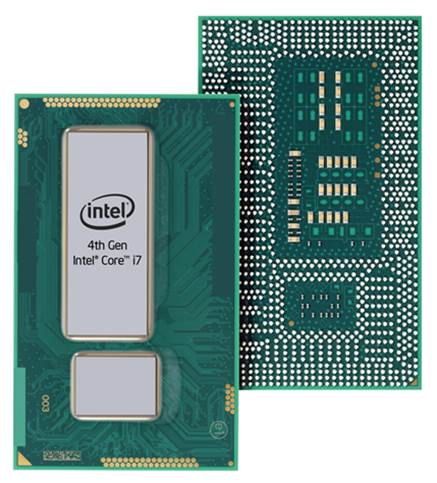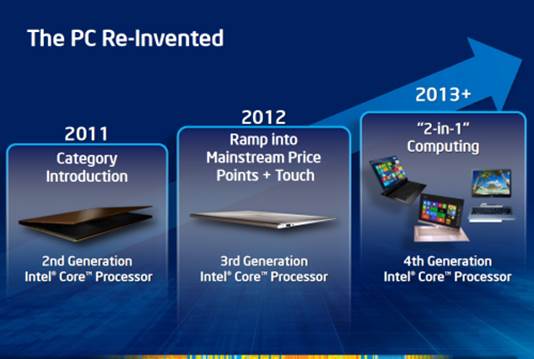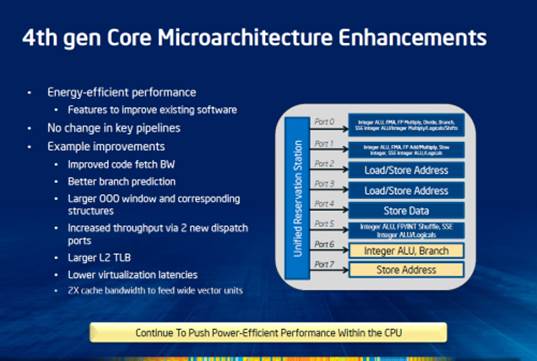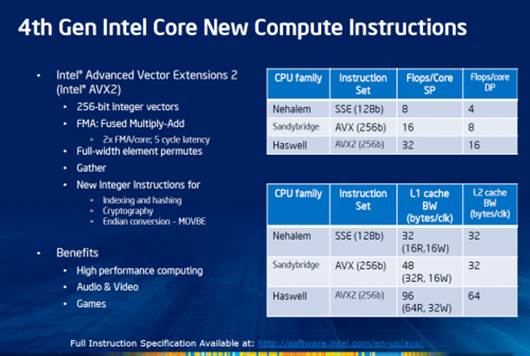Finally, after a very long and anxious wait,
one of the fourth generation Core processors for desktops, which is made based
on the new Haswell architecture, has made its first arrival, with considerably
higher performance, better energy-efficiency, wonderful overclocking. Could all
of these be true? What happened?
Today, the first day of summer, is also the
day Intel lifts the embargo on publications about performance of the Haswell,
Intel CPU’s new generation. All of the great number of Haswell-platform
products will be officially introduced in just three days, but such dramatic
change can hardly be made in such short period of time. Therefore, in our
review, we will just cover one particular model, which is really expected,
right now.

Intel
Core i7-4770K
It truly is a very long wait as we have to
be patient longer than usual. According to the tick-tock strategy of Intel
during the period of introducing the new CPU design, one year is required
between each tick and each tock. However, the tick-tock model is almost
forgotten nowadays, because a longer period of time would be needed for Intel
to upgrade its microarchitecture. It can be expected, as there is no equivalent
rival competing with Intel on the market of x86 CPUs. The long-time opponent
AMD has just left the market of high-performance CPU for the other low-price
and niche products. And now Intel, to whom most of the x86 CPU market belong,
has to encounter the global problem such as the decrease of x86-based
architecture popularity and solutions in general.
This also means that Intel now has to prove
its ability of not only a developer and manufacturer of high-performance CPU
designs but also a transformer who can transfer its long-time experience into
emerging products of mobile devices at the cost of classic PCs. It is not AMD
that Intel has to face now as a real rival but the ARM architecture CPU manufacturers,
which have been keeping track of the newest trend and now are the pioneers.
We dedicated a special review to research
on the Haswell microarchitecture thoroughly. Please bear this in mind that
higher performance is not the primary target of Haswell, but in contrast, the
new design is aiming to lower the thermal and power requirements, making the
new CPU not only appropriate for traditional computers but also modern compact,
light and slim devices like Ultrabooks, transformer notebooks and tablet PCs.

The
product image
Although the developer has changed their
priority clearly, we, PC enthusiasts, still have not changed enough to give up
on the classic PC, especially when brand new utility might not really suitable
for its flexibility and performance. This is the reason that we decided to
start our review with one of the fourth generation Core processors with Haswell
microarchitecture by having a closer look at the classic CPUs first. After
taking many current situations into consideration, we even do not expect a
higher performance, clock rates or overclocking potential. There is things
which is more important to check, which is whether the developer has not
introduced some changes in CPU design to enhance its power but in return made
it less suitable for desktops compared to the time-tested Sandy Bridge and Ivy
Bridge series.
Something has enriched our knowledge. We
have heard about a slowed-down L3 cache, about moving an important part of the
voltage regulator from the mainboard to the CPU that might cause less
flexibility in favor of settings, about the fundamentally new LGA1150 platfor,
and about problems of compatibility with older PSUs. This list of flaws might
be even extended when we check the Haswell more clearly. It might be the most
interesting things in our review now, in which we will review on the i7-4770K,
the senior desktop fourth generation Core processor from Intel.
Brief tour around the Microarchitecture
Although the Haswell microarchitecture is
supposed to represent the “tock” cycle, i.e. to introduce considerable
innovations while retaining the same manufacturing technology, it doesn’t
follow Intel’s established pattern. The Haswell is meant to optimize Core
processors in terms of energy efficiency rather than high performance. Intel is
going to use the new CPU design for mobile gadgets in the first place,
traditional PCs and servers being of secondary importance.
Although the Haswell microarchitecture is
believed to represent the “tock” cycle, which means to introduce considerable
enhancements while the manufacturing technology is still unchanged, it does not
follow Intel’s established pattern. Haswell aims to optimizing Core processing
in terms of energy efficiency rather than high performance. Intel prioritizes
to use the new CPU design for mobile gadgets, and then come the traditional
PCs.
Haswell being fast is actually a fact. It
can be used to make the CPUs with the normal performance/power consumption
ratios, but they are just sub-products since the main product is the new
low-wattage core CPUs. That is why we do not really care about most of the
innovations implemented in the Haswell microarchitecture. We can only tell you
that Intel has based on the new design to advertise its CPUs aggressively with
a specified power in the range of 6 to 15 watts. Many means have been taken
advantages by Intel to come up with the low level of power consumption, from
optimized manufacturing process to the introduction of additional power-saving
states which might be able to deactivate the specified CPU unit even while the
system is operating.
However, there are fewer innovations in
terms of enhancing performance. The majority of Haswell inherit from Ivy
Bridge. For the basic CPU architecture, it seems to have no change, and the
execution pipeline’s length still remains unchanged as before (14-19 stages)

The
fourth-generation Core microarchitecture enhancements list
The important enhancement in the x86 core
design is the stage of implementing microinstruction. Currently, new execution
devices and two new execution ports have been introduced, which have additional
sub-units for processing integer instruction, branches and addresses. The
improved parallelism feature have helped solving two problems. First, there are
already four integer ALUs in the CPU, so the classic code can be executed at
its decoding rate. Secondly, for floating point and FMA instructions, the
microarchitecture is better suited without interfering into any normal code and
even can be able to make Hyper-threading more efficient.
The second group among the positive
enhancements in Haswell microarchitecture is the cache memory subsystem. The L1
and L2 caches’ bandwidth has been doubled while the latency is kept unchanged.
The L1 cache can process two 32-byte reads and one 32-byte write per clock
cycle while with one clock cycle, the L2 cache can receive and issue 64 bytes
of data.
Moreover, Haswell-based CPU supports the
AVX2/FMA3 instruction sets which can be used to expand the current SIMD sets by
introducing the 256-bit instruction to solve the integer vectors, full-width
element permutes, gather and floating-point fused multiply-add operations (in
which consists of both multiplication and addition simultaneously).
High-performance computing, gaming computations, video and audio processing,
etc, can use the AVX2/FMA3 instructions to ensure higher speed of popular
algorithms.

4th
Gen Intel Core new compute instructions
Some other smaller innovations are also
worth being mentioned. The Haswell is typical with the improved branch
prediction, a larger out-of-order execution buffer and a larger L2 TLB.